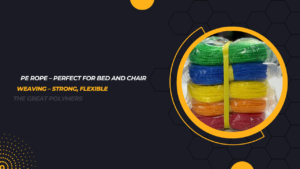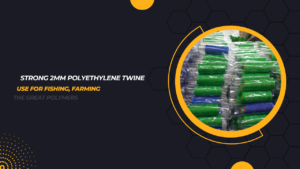Submersible pumps play a crucial rope in various industries, from agriculture to wastewater management. However, along with their efficiency and convenience, submersible pumps also pose certain risks, especially during installation, maintenance, and retrieval. To mitigate these risks and ensure smooth operations, employing safety measures like a submersible pump safety rope is essential.
Importance of Safety Measures in Pump Operations
Pumping operations, particularly those involving submersible pumps, demand a high level of caution and adherence to safety protocols. Accidents and equipment failures can result in costly downtime, injuries, and even fatalities. Therefore, prioritizing safety is paramount in any pumping operation.
Understanding Submersible Pumps
What Are Submersible Pumps?
Submersible pumps are specialized devices designed to operate while submerged underwater, making them ideal for applications where water needs to be pumped from deep sources such as wells, boreholes, or tanks.
How Submersible Pumps Work
These pumps function by pushing water to the surface through a series of impellers and chambers, powered by an electric motor located above the water level.
What is a Safety Rope for Submersible Pumps?
A safety rope for submersible pumps is a critical component designed to secure the pump during installation, maintenance, and retrieval processes. Typically made of durable materials like nylon or polypropylene, the safety rope provides stability and control, preventing accidental drops or losses of the pump.
The Role of Safety Rope in Submersible Pump Operations
Preventing Accidents
One of the primary functions of the safety rope is to prevent accidents during pump installation and retrieval. By securely tethering the pump to a stable structure or lifting apparatus, the risk of unexpected drops or mishandling is significantly reduced.
Ensuring Equipment Retrieval
In cases where pump maintenance or replacement is necessary, the safety rope facilitates the retrieval process, allowing operators to safely lift the pump from its submerged position without risking damage or injury.
Characteristics of a Reliable Safety Rope
A reliable safety rope for submersible pumps should possess certain characteristics to ensure effectiveness and durability. These may include:
- High tensile strength to withstand the weight of the pump.
- Resistance to abrasion and degradation from exposure to water and chemicals.
- Secure attachment points for easy connection to the pump and lifting equipment.
Proper Installation and Maintenance of Safety Rope
To maximize the effectiveness of the safety rope, proper installation and regular maintenance are essential. This includes inspecting the rope for signs of wear, ensuring secure attachment points, and following manufacturer guidelines for usage.
Compliance with Safety Regulations and Standards
In many industries, adherence to safety regulations and standards is mandatory. Employing a safety rope that meets or exceeds these requirements not only ensures legal compliance but also promotes a culture of safety within the organization.
Advantages of Using Safety Rope in Submersible Pumping Applications
The use of safety ropes in submersible pumping applications offers several advantages, including:
- Enhanced safety for operators and equipment.
- Reduced risk of accidents and downtime.
- Compliance with industry regulations and standards.
- Protection of valuable assets and infrastructure.
Addressing Common Concerns and Misconceptions
Despite the benefits of safety ropes, some concerns and misconceptions may exist regarding their usage. Addressing these issues through education and awareness initiatives can help foster greater acceptance and adoption of safety practices.
Case Studies: Real-Life Examples of Safety Rope Implementation
Examining real-life scenarios where safety ropes have prevented accidents or minimized damage can highlight their effectiveness and encourage widespread adoption across industries.
Training and Education on Safety Rope Usage
Providing comprehensive training and educational resources to personnel involved in pump operations is crucial for promoting proper safety rope usage and ensuring optimal outcomes.
Innovations and Future Trends in Submersible Pump Safety
Continued research and development in submersible pump safety technology are driving innovations such as advanced materials, remote monitoring systems, and predictive maintenance solutions.
Conclusion: Prioritizing Safety in Pumping Operations
In conclusion, the integration of safety ropes in submersible pump operations is a fundamental step towards mitigating risks, protecting personnel and equipment, and maintaining operational continuity. By recognizing the importance of safety measures and embracing proactive approaches, industries can safeguard their assets and enhance overall productivity.
FAQs: Answering Common Questions About Submersible Pump Safety Rope
What material is best for a submersible pump safety rope?
- Nylon and polypropylene are commonly used materials due to their strength and resistance to water and chemicals.
Do all submersible pumps require safety ropes?
- While not mandatory in all cases, safety ropes are highly recommended for ensuring safe installation, maintenance, and retrieval of submersible pumps.
Can safety ropes be reused after a pump installation?
- Yes, safety ropes can typically be reused as long as they remain in good condition and pass inspection.
Are there specific regulations governing the use of safety ropes in pump operations?
- Regulations may vary depending on industry standards and local ordinances. It is essential to consult relevant guidelines and adhere to best practices.
How often should safety ropes be inspected and replaced?
- Safety ropes should undergo regular inspections for signs of wear or damage and be replaced as needed to maintain optimal safety standards.











Leave a reply